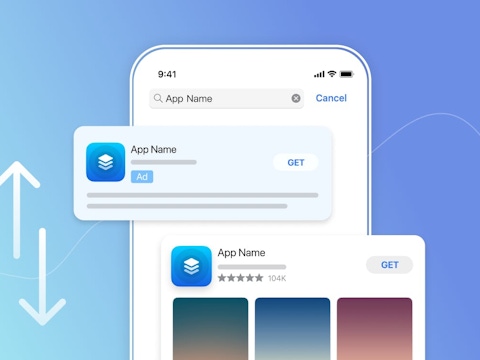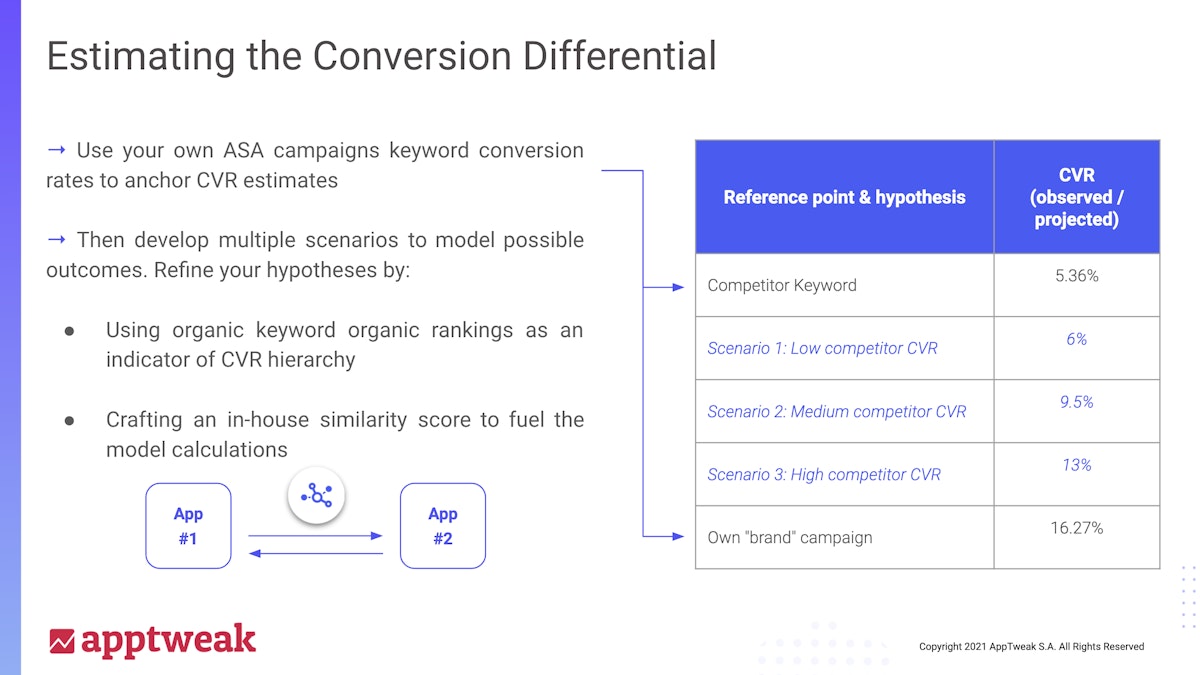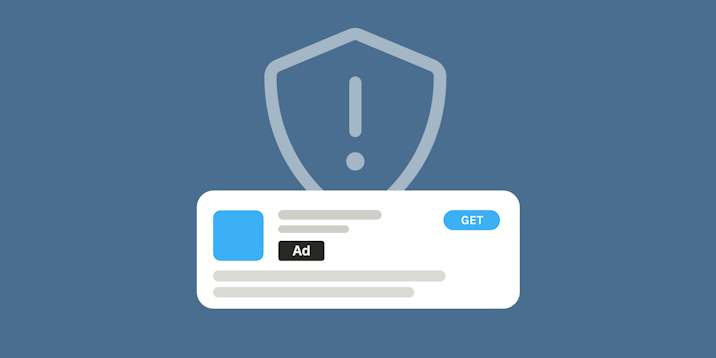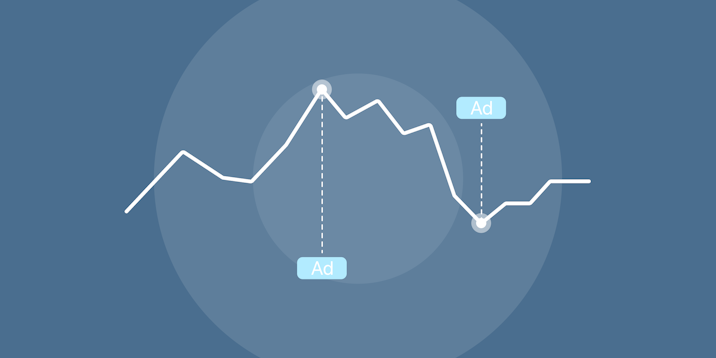
Measuring Cannibalization in Apple Search Ads
The content of this article was first presented at the ASO Conference 2021 on June 3rd.
In the wake of Apple’s App Tracking Transparency (ATT) framework released this spring, many app developers have considered shifting more advertising budgets to Apple’s ad platform, Apple Search Ads (ASA), given its exemption from ATT. With expectations that cost per install (CPI) prices could increase as a result of this higher consideration for Apple’s inventory, we went over the pros and cons of Search Ads campaigns.
On paper, the principles behind Apple Search Ads are quite simple: app developers can bid on any keyword to have their app appear above the first organic search result in hopes that the prominent position delivers an increase in app downloads. And while the algorithm determining the winner of a bid supposedly accounts for the metadata and performances of every bidding app, the possibility to bid on any keyword, including brand names, has led many to bid on competitor brand terms. In turn, this has led many apps to bid on their own brand terms to prevent competitors from “stealing” their traffic. However, brand defense campaigns do have an obvious downside: while they are meant to secure search traffic from being diverted, they introduce the question of how many impressions and installs would have been driven organically and were therefore cannibalized instead.
Cannibalization is a game of conversion differential
If we define cannibalization as paying for traffic or installs that would have otherwise been driven organically, the cannibalization of impressions is a simple matter of bidding (or not bidding) on keywords for which you rank first in organic search results. However, cannibalization of installs is harder to measure as it asks whether the competitor who obtains the paid impression would be able to convert it into an app download.

As a result, the conversion differential between a brand and attacking competitors is key to assess the amount of cannibalization in play, and developers will have to consider the different factors at work if they want to estimate it:
- First comes the app’s brand power and customer loyalty: not all apps are equal when being considered as the ‘obvious choice’ for customers entering a certain search query (branded OR generic). Getting unaided brand notoriety numbers from a user research team can give you a first idea of your brand power, but don’t forget to add qualitative user research to measure how users react to your brand. Brands that customers identify strongly with (for instance, because of shared values) are a lot less vulnerable to customers switching to a competitor’s product when given the opportunity.
- Second is the notoriety of competitors and their products’ perceived similarities: competitors that most customers have never heard of tend to be a smaller threat to your brand traffic; however, even when this is the case, another major factor is how similar their product seems to yours. Even if products are actually different, perceived similarities are what cause the greatest risk of store users adopting opportunistic behaviors and reconsidering which app to download.
- Third is reflecting on consumers’ true search intent: when considering broad match brand defense campaigns, certain queries such as “[brand name] free” may represent a search for a different app offering similar functionalities for a cheaper price. On the other end of the spectrum, certain brands with extremely high notoriety and a strong presence may sometimes reach a genre-defining status, leading users to not always search for the brand name with the intent of downloading the original app but instead turn to a similar product. Such cases can be found with brand names that already showed high brand volumes before an official app was released, such as “scrabble” or “mario kart”, for instance.
Formulating accurate conversion rate estimates
Once you have considered the factors that may impact your app’s conversion compared to competitors, modeling an actual cost for cannibalization requires formulating conversion rate hypotheses. This is the “hit or miss” part of the entire model and given conversion rates are closely guarded data (Apple does not even share organic conversion rate data at the keyword level with developers), formulating accurate hypotheses is a tough challenge. As such, the best route is probably to formulate multiple scenarios powered with “proxy” data to ensure they are not completely unrealistic.
The main data points to use in such a case are probably the keyword-level conversion rates you may obtain from your own Search Ads campaigns. When reasoning in abstract, it is only logical to imagine your own app’s conversion rate for your brand name is unlikely to be worse than any of your competitors bidding on your brand, and thus use it as the higher bracket competitors will have trouble reaching. Then inverting the logic and considering your app’s conversion rate for a competitor’s brand name is also a great way to determine an anchor for your hypotheses as to how this competitor might convert for your brand name.

Once you have determined your first anchors, remember to calculate a similarity score and refine your conversion differential hypotheses based on your own user research and the multiple data points that 3rd party tools can offer. Remember in particular app stores are all about comparing relevance and the multiple places where your app appears are as many opportunities to compare similarities and conversion performances with other apps. Top organic search rankings for instance tend to reflect which apps among the most downloaded convert better than others for a specific keyword or query, and are a great hint to estimate conversion.
Modeling the cost of protection vs. cannibalization
Once you have set your competitors’ conversion rate estimates, modeling the actual cost of a defended install vs. the price of cannibalization becomes a simple question of maths. Assuming no impression is escaping the search ad inventory, the number of defended installs is simply the number of impressions you paid for that your competitors would have been able to convert into downloads, while cannibalized installs are the total number of installs you received from your Search Ads campaign minus the number of defended installs. Hence the cost per defended install becomes:
Cost Per Protected Install = Total Ad Spend / (Impressions • Competitor Conversion Rate)
Comparing this cost with the cost per install reported by Apple Search Ads can then lead you to estimate the protection premium you pay for a given campaign and what amount of your search ads spend actually goes to cannibalization. Unfortunately, knowing about these costs does not remove the dilemma of whether or not to bid on your top organic keywords, but it can at least help inform your decision to start, stop or change the budget you invest in specific Search Ads campaigns.
Using the cannibalization model efficiently and cautiously
While the question of measuring the exact cost of cannibalization has been central to Apple Search Ads since they were introduced, it is important to remember models such as the one presented in this article are meant to be a simplification of reality and help decision making, but need to be treated as such and nothing more. Don’t forget the model does not take into account certain parameters such as the percentage of users who will ignore the Search Ads placement by default, or the fact not all users end a search on the store by downloading an app.
Furthermore, the model’s accuracy will depend on the precision of your hypotheses, which means you should regularly test and retest search ads campaigns to maintain the data points behind your hypotheses up to date. Just as for organic performances, Apple Search Ads campaigns are conducted in an always evolving environment, and every keyword or creative change as well as many external factors can change an app’s conversion every day.
Want to know more about how AppTweak can help you calculate a similarity score between your app and your competitors and provide you with top-quality data and insights on the App Store and Play Store?



 Musique Battut
Musique Battut
 Justin Duckers
Justin Duckers
 Georgia Shepherd
Georgia Shepherd
 Sukanya Sur
Sukanya Sur

 Ian Pernia
Ian Pernia